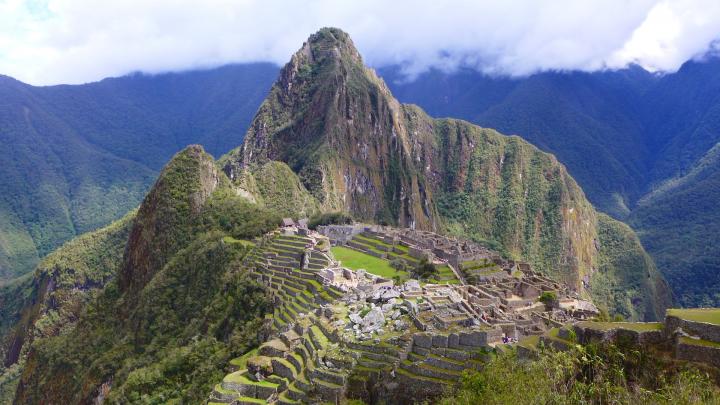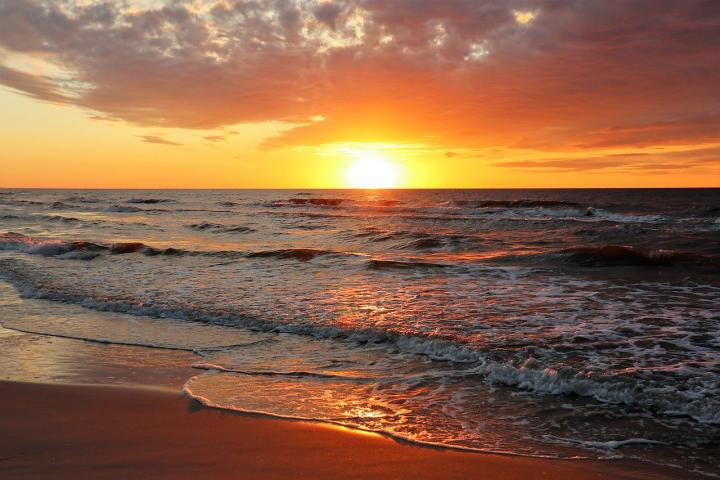On this March equinox, does the Sun rise due east and set due west? Are day and night of equal duration? Some of these answers are quite contrary to common wisdom. Bob Berman brings the fun facts to celebrate the first day of spring!
Advertisement
On the vernal equinox (March 20), the Sun will cross the celestial equator—an imaginary line in the sky above Earth’s equator—from south to north. This instant marks the March equinox everywhere on Earth. If you live in the Northern Hemisphere, it’s the spring equinox; in the Southern Hemisphere, it’s the autumn equinox.
Why Does the Spring Equinox Fall on Different Dates?
If you thought that the Spring Equinox only ever occurred on March 21, you may be dating yourself.
Spring arrived on the 21st of March during most of the 20th century, but the event slides earlier and earlier during the 400-year Gregorian calendar cycle. The final March 21 equinox was in 2007—even if we use Greenwich Time, as many almanacs do.
Now the 21st is gone for the rest of our lives, unless you believe in reincarnation and want to check back in during the 22nd century.
This year, the March equinox lands on the 20th. See our March Equinox: First Day of Spring page!
Are Day and Night Equal at the Equinox?
The word equinox is derived from two Latin words—aequus (equal) and nox (night).
The equinox is famously the time of balance, with theoretically 12 hours of sunshine and 12 hours of non-Sun.
In practice, they are not exactly equal. There’s actually more day than night on the day of an equinox. Why? Earth’s atmosphere bends (refracts) sunlight upward. Also, the Sun isn’t a single point of light, but a large disk. Together, these factors add more daylight to the equinox. The real date of sunlight equality is three or four days ahead of the equinox.
The difference depends on where you live (your latitude). See the sunrise, sunset, and day length for your zip code.
Does the Sun Rise Exactly East and Set Exactly Due West?
Yes, the Sun only rises due east and sets due west on the equinox. On other days, the Sun rises either north or south of “due east” and sets north or south of “due west.” Most ancient cultures, who were more in touch with nature, tracked the Sun’s rising and settings points with standing stones or other monuments. See 6 sites aligned with the equinox or solstice.
The equinox is also when every place on Earth rotates perpendicularly into our planet’s “terminator”—its day-night shadow line. As a result, on the day of the equinox, the Sun will rise precisely due east and set exactly in the west, and this is true everywhere.
It’s the best time to observe the cardinal compass directions. (Well, not quite everywhere. From both poles, you’d see the equinoctial Sun hovering fully above the horizon, never setting, but moving horizontally. At the north pole, the Sun moves rightward, and it chugs along leftward for the folks at the South Pole research station, rolling atop the horizon like a red rubber ball.)

Image: Machu Picchu. A sacred stone at the top of the mount is positioned to indicate exactly noon on the equinox.
The Sun Rises and Sets Faster at the Equinox
Here’s another interesting fact: The fastest sunset occurs on or near the equinox! The same goes for sunrises.
If you have a clear day, grab a drink and watch the sun setting. See how many minutes it takes for the entire body of the Sun to sink below the horizon.
Why is it faster? The Sun is setting at its steepest possible angle.

Are the Days Getting Longer?
This is also the week when sunlight changes at its maximum annual rate, with three extra minutes of daily Sun from typical U.S. cities, but nearly seven daily minutes for the folks in Fairbanks, Alaska. That may be the equinox’s greatest gift, and one worthy of an early morning Sun Salutation.
Check it! See your day length times on the Almanac sunrise/set calculator.
What Else Happens at the Equinox?
In the Northern Hemisphere, plants and animals start feeling the Sun’s energy, although its intensity depends on your latitude.
The equinoctial Sun always misses your zenith (straight-up overhead point) by the same number of degrees as your latitude. In Bennington, Vermont, latitude 43°, the midday Sun stands 43° from precisely overhead on the day of the equinox. Essentially, it’s halfway up the sky. It’s a gratifying change from just a month ago and a dramatic shift since December, when the midday Sun only climbed an anemic one-fifth of the way up the sky. Since solar rays are stronger the higher up it is, you can now palpably feel the Sun’s growing intensity.
And it’s not finished: Watch the sky at 1:00 PM each day, and you’ll see that the Sun manages to climb four of its own diameters higher each week. This rapidly ratchets up its intensity. This is the year’s greatest solar-energy boost for those who live north of the equator.
Find out all about the First Day of Spring!
Wherever you are, take a few minutes to enjoy this year’s vernal equinox and all the good things that come with it.
This article was first published in 2017 and is regularly updated. Image Credit: Josephine Wall. Enjoy more art on her Web site.











Comments